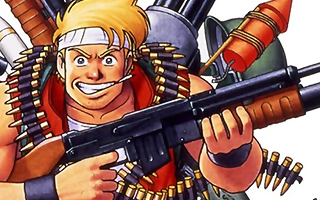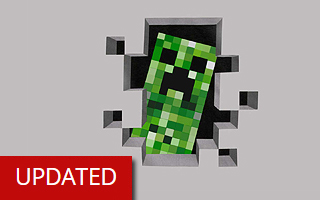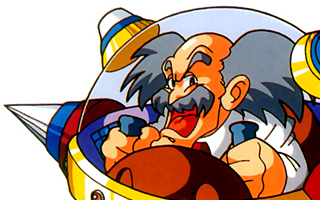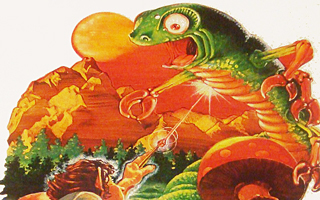Commodore 64
Top 10 Best Commodore 64 Games of All Time!
The Commodore 64 was the best-selling 8-bit computer of all time. It outclassed the Apple II and Atari’s 8-bit line in many regards and dominated the low-end computer market for most of the ’80s thanks to its low price point and flexible hardware. Over 2000 games were commercially released for the Commodore 64, and cutthroat marketing made it the computer of choice for publishers and consumers alike. The aggressive pricing of the Commodore 64 was a catalyst for the North American video game console crash of 1983. Rebates were offered to consumers who traded in other consoles or computers, and an ensuing price war drove multiple manufacturers from the market. Its software was not limited to games by any stretch of the imagination, but the Commodore 64 was the world’s most successful video game platform released between the Atari 2600 and Nintendo Entertainment System.
10
IK+
1987

Before Street Fighter II popularized the genre, most fighting games felt pretty derivative. IK+ (released as Chop N’ Drop in America) was an updated version of International Karate which was a shameless clone of The Way of the Exploding Fist which was clearly inspired by Karate Champ. There were so many karate games on the market that felt nearly identical to one another, but IK+ is the best… around! The characters in the game have over a dozen moves at their disposal, including jumping sidekicks, squatting reverse punches, and various somersault and about-face moves. This was fairly typical of karate games from the era, but IK+ mixed things up with the inclusion of a third character. Having three karateka fighting each other at the same time allowed for all sorts of new strategies to take shape. Only two human players can play at once, so one of the characters will always be controlled by the computer. Thankfully, the computer isn’t fooled by the same move over and over again and was surprisingly well-balanced. IK+ only featured a single backdrop, but players had the ability to change its color in real-time by pressing certain key combinations on the keyboard. There was also a key combination that would cause the fighters to drop their pants. I wish Dead or Alive would steal this mechanic, but I digress. IK+ is the best fighting game released on the Commodore 64 and arguably the best fighting game released prior to the Street Fighter II revolution.
9
Dropzone
1984

Dropzone is a side-scrolling shooter that borrows heavily from Defender. It wouldn’t be entirely fair to call the game a Defender clone, but the similarities are many. The games both allow players to move either left or right, a radar at the bottom of the screen lets you know where your enemies are, and the goal of both games is to rescue civilians from invading aliens. The games even use similar fonts on their respective title screens. However, instead of piloting a spaceship in Dropzone, players assume the role of a dude wearing a jetpack. There are various types of aliens to contend with, and some of them can’t be destroyed. Fortunately, you’ll have access to a cloaking device which grants temporary invincibility. Dropzone isn’t the most original game, but it was impressive on a technical level. The scrolling and animation were very fluent, the crater-covered surface has a lot of detail, and the colorful explosions can be downright beautiful. The game was released early into the life of the Commodore 64, but the gameplay holds up remarkably well and it’s still fun to play to this very day. Defender was never ported to the Commodore 64, but Dropzone filled the void perfectly.
8
Laser Squad
1988

Laser Squad is a turn-based strategy game and the precursor to X-COM. (The first X-COM game was actually known as Laser Squad II during its development.) The basic concept of the game involves two opposing players taking turns positioning military units while racing to achieve a declared objective. This objective is usually the complete annihilation of your opponent’s forces, but there are also rescue and retrieval missions as well. The maps in the game are relatively small compared to modern strategy games, but they still offer near-endless possibilities. The option to plant delayed grenade charges, blast holes through walls, or simply lay in wait for your opponent makes the game feel surprisingly sophisticated. It’s always nice when a strategy game rewards patience and planning over mindless aggression. Laser Squad can be a lot of fun when playing against the computer, but you’ll need a human opponent in order to fully enjoy the game. Many strategies wouldn’t work if your opponent could see your moves ahead of time, so players have to agree not to look at the screen during their opponent’s turn. This makes for a slightly awkward multiplayer experience, but it’s hard to fault the game considering it was released in 1988.
7
Impossible Mission
1984

Impossible Mission casts the player as a secret agent on a quest to infiltrate an enemy stronghold and stop an evil genius. During the mission, players must avoid deadly robots as they search for puzzle pieces in numerous rooms. While leaping and somersaulting your way from danger, you’ll need to develop a profound understanding of your environment. You’ll examine furniture, manage elevators, and occasionally freeze your robotic rivals in place. Once you’re in possession of all of the pieces, you can solve the puzzle in order to open the door to the control room where the evil professor is hiding. Instead of giving the player an arbitrary number of lives and continues, Impossible Mission is a race against the clock. Players have six hours to complete their mission, and 10 minutes will be deducted each time the player dies. Impossible Mission is a simple platformer at its core, but the location of puzzle pieces, room layouts, and abilities of the robots are randomly selected each game. This adds tremendous replay value and gives you an incentive to play it over and over again.
6
Ms. Pac-Man
1984

It would be easy to describe Ms. Pac-Man as “Pac-Man with a bow” and call it a day, but that wouldn’t be fair. Granted, Ms. Pac-Man wasn’t exactly the most groundbreaking sequel ever, but why fix something if it isn’t broken? The concept of navigating through mazes and avoiding ghosts is simple enough for a chimpanzee to grasp, but it’s a concept that also offers remarkable replay value. Ms. Pac-Man has shown up on a lot of lists already, almost to the point where I’m worried that I’m overrating the game somewhat. In my defense, maze games were a huge deal in the early ’80s and Ms. Pac-Man was the best game in the genre. While Pac-Man had a handful of really bad ports, a lot more care was taken with Ms. Pac-Man. It’s as though everyone was trying to impress her or something. Not all Ms. Pac-Men are created equal, however. The DOS, Apple II, and Atari 8-bit versions of Ms. Pac-Man have nothing on the Commodore 64 version.
5
Maniac Mansion
1987

Maniac Mansion is a graphic adventure game developed and published by Lucasfilm Games. It was the first in a long line of adventure games from Lucasfilm, and its revolutionary point-and-click interface shaped the genre and led to similar systems being adopted by other developers. The purpose of the game is to guide a group of friends through a haunted mansion. There are fifteen different commands that players can choose from in order to solve puzzles and interact with the game’s environments. There are six primary characters in the game, but the players only choose three of them for the adventure. Each character has their own unique abilities, so the game will take a different turn depending on your party members. Some characters can play musical instruments, some can repair appliances, and one character is a tuna head! Certain puzzles can only be solved with specific skills, so the game has to be finished in different ways depending on the characters the player has chosen. Upon its release, Maniac Mansion received high praise for its graphics, cutscenes, and animation. Its over-the-top sense of humor was also an important ingredient to its success. Maniac Mansion was Lucasfilm’s first foray into gaming, but they clearly had a winning formula from the very beginning. Their next game (Zak McKracken and the Alien Mindbenders) is also worth mentioning, but Maniac Mansion gets the nod for having better puzzles, providing more ways to beat the game, and being more innovative.
4
Wizball
1987

Wizball is a scrolling shooter in the vein of Gradius… sort of. Although you’ll spend a lot of time shooting things, the primary goal is to collect droplets of paint to color the monochromatic landscapes. Each stage needs to be painted a different color, so players have to find sufficient amounts of red, blue, and green paint in order to come up with the appropriate combinations. Most shooters feature flying space ships or cute witches of some sort, but Wizball puts players in control of a wizard who has taken on the form of a green ball for some reason. The ball bounces up and down at a steady rate, and players simply control its speed of rotation in order to guide its movement. Over time, players can earn enhancements to improve mobility or fire power, and they’ll also be able to call in the wizard’s feline companion for assistance. The cat can be controlled independently of the wizard, and a second player can even take control of it in a two player co-op mode. The control method in Wizball might feel awkward at first due to how unusual it is, but it becomes second nature once you wrap your head around it. Wizball has great production values and impressive graphics, and the innovative gameplay gives it lasting appeal.
3
Bubble Bobble
1987

Bubble Bobble has been released on dozens of platforms, so it’s probably not the most interesting choice for this list. It’s very deserving of its praise, however. Bubble Bobble was one of the best arcade games of the mid 1980s, and the Commodore 64 version is a surprisingly faithful port. To put it bluntly, most arcade ports on the Commodore 64 kind of sucked. Bubble Bobble was an exception to the rule, and I’d go so far as to describe it as the best arcade port on the system. Backed by the most infectious track ever heard in a video game, Bubble Bobble features over 100 screens of platforming fun. The game is every bit as enjoyable today as it was three decades ago. The premise of the game involves blowing bubbles that can either trap enemies or act as temporary platforms to reach areas of the levels that would be otherwise inaccessible. The game is perhaps best-known for its incredible two player mode. While grounded in cooperative gameplay, multiplayer can also become competitive as you race to pick up better items. Unfortunately, simple multiplayer games like Bubble Bobble seem to have gone the way of the bubble-blowing dinosaur.
2
Mayhem in Monsterland
1993

Mayhem in Monsterland is a side-scrolling platformer starring an adorable triceratops named Mayhem who has been blessed with the gift of speed. It might sound infantile, but Mayhem in Monsterland is the best-looking game in the Commodore 64’s vast library. The backgrounds make great use of the system’s limited pallet, the sprites are well-animated, and the game features the smoothest scrolling I’ve ever seen on the system. By all rights, the game shouldn’t even be possible on a gaming platform from 1982. Although the Commodore 64 was designed with smooth scrolling in mind, games that were as fast and colorful as Mayhem in Monsterland were few and far between. The game was only possible because of a programming exploit that had been discovered by accident, and some Commodore 64’s couldn’t even run the game without crashing! The unconventional effects made Mayhem in Monsterland feel like the second coming of Sonic the Hedgehog. (Mayhem’s feet even spin like Sonic’s when he builds up speed.) In addition to its technical achievements, Mayhem in Monsterland has some great level designs. The stages are fairly linear in that they only allow left-and-right movement, but they have a lot of depth to them. Players will occasionally have to jump off their enemies heads to reach higher altitudes, and they’ll need to explore behind waterfalls and other background elements in order to find hidden secrets. Whether you’re racing along treetops or sledging through bodies of water, the stages offer a lot of variety. Mayhem in Monsterland was one of the last notable releases for the Commodore 64, but it was a beautiful swan song and a great way to reward those who had stuck with the system.
1
Paradroid
1985

Paranoid Droid… Para Noid Droid… Para Droid… Paradroid! Guys, I did it! I cracked the code! Paradroid could be described as a bizarre hybrid of a shooter and a puzzle game, but it’s so unique that it can’t really be put into any category. The game puts players in control of a robot with a mission of neutralizing other bots that have been hijacked. Most of the game is played from an overhead perspective, and players will navigate through a fleet of multi-floored spaceships in search of hostile robots to overtake. The process of neutralizing the hijacked droids involves a mini-game based around circuit diagrams and logic gates. By creating circuits to route power to the rival bots, the player can overwhelm their opponent and eventually take them over. Not all robots are created equal, so players will notice changes to their maneuverability and abilities as they jump from one robot to another. Some robots even have weapons, so players will have the opportunity to destroy their rivals by shooting them rather than having to mess around with electrical diagrams. Since the robots have varying power levels, players have to be careful with how they progress. Attempting to take over a robot that’s significantly more powerful is a losing proposition, so a certain element of exploration is required in order for players to find appropriate targets. Paradroid feels radically different than any other game released on the Commodore 64, and working your way up the robot food chain is tremendous fun.





Do you agree with this list? Let us know what you think by leaving a comment below. Your opinion matters!